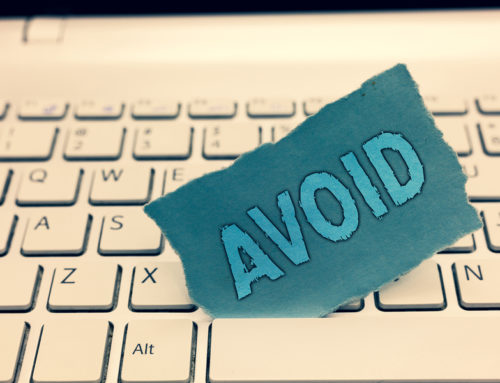 I’m presenting “Must-Have Features for Nonprofit Websites” as a webinar on this Wednesday, June 25, from 2:00 – 3:00 p.m. ET, and the first must-have on my list is a clear domain name and multiple variations on it. Not multiple websites. Just one of those will do. What you need is multiple domains that all point to your main website. It’s like having more than one door into your house. In your domain registrar account, you simply forward all of your secondary domain names using a 301 permanent redirect to your main domain that holds all of your website content.
I’m presenting “Must-Have Features for Nonprofit Websites” as a webinar on this Wednesday, June 25, from 2:00 – 3:00 p.m. ET, and the first must-have on my list is a clear domain name and multiple variations on it. Not multiple websites. Just one of those will do. What you need is multiple domains that all point to your main website. It’s like having more than one door into your house. In your domain registrar account, you simply forward all of your secondary domain names using a 301 permanent redirect to your main domain that holds all of your website content.
Why is this so important? Because when people guess what your website is or try to dredge it up from their memories, if they get close, wouldn’t it be nice if they went straight to your website instead of getting an error page or someone else’s site?
And what about those fingers on auto-pilot that type .com instead of .org but otherwise get your domain name right? Again, wouldn’t be nice if they got to your site anyway?
Multiple domain names not only help visitors who don’t have it quite right; they also help you protect your brand. If you build a great .org site, you don’t want to give up traffic or the goodwill you’ve created to someone who uses your name as a .com site.
Get the .com, .org. and .net versions
Here’s what you should do. First, if they are still available, buy the .org, .com, and .net versions of your main domain name at GoDaddy or your favorite registrar. I’m working with one nonprofit who was using a .com domain name. The first thing I did, before even talking about their design or content, was to have them buy the .org and .net versions, which (luckily) were still available.
In theory, .com is for businesses (commercial), .org is for organizations, and .net is for networks. But unlike .mil (military) and .gov (government) which are reserved for those institutions, .com, .org. and .net can be purchased and used by anyone. Go get them. There’s nothing stopping you except the price, which is usually less than $10/year.
Get the reasonable guesses and typos
Next, think of reasonable variations that a site visitor might type into a web browser. The Nature Conservancy uses the very short and memorable nature.org as its main domain. But natureconservancy.org and thenatureconservancy.org will take you to the same place. Those domains are forwarded automatically to nature.org.
If you think your site visitors might be prone to replacing a word in your domain name with another, you should also consider purchasing those variations. When I started Nonprofit Marketing Guide, I thought to myself, “OK, if someone heard about a site like this, but couldn’t quite recall the name correctly, what guesses might they have?” As a result, I also purchased the domains for “Nonprofit PR Guide” and “Nonprofit Communications Guide.” Those all forward to NonprofitMarketingGuide.com.
If your website address includes a commonly misspelled word or name (e.g. Cathy or Kathy?), you should also consider buying those variations.
What do you do if the domain names aren’t available?
Many registrars offer backordering services. For a fee, you can backorder the domain names, and if the current owner fails to renew the domain on time, your registrar will try to snap it up for you.
For example, when I started NonprofitAnnualReports.net in January 2004, the .org and .com versions were already gone. As I recall, one was a consulting firm and the other was an ad site. Using backordering, I obtained the .org site at the end of last year and the .com earlier this year. Both are now forwarded to the original .net domain where the site is hosted. I also purchased nonprofitannualreport.com, .org, and .net (without the s on reports), since that seems like an reasonable typo.
Obviously, you can take all of these tips to the extreme, and end up spending a fortune. You don’t need to go overboard with it. Brainstorm the most obvious choices and then get as many as you can reasonably afford. If you can only afford a handful, I say get at least the .org, .com, and .net of your main domain name.






